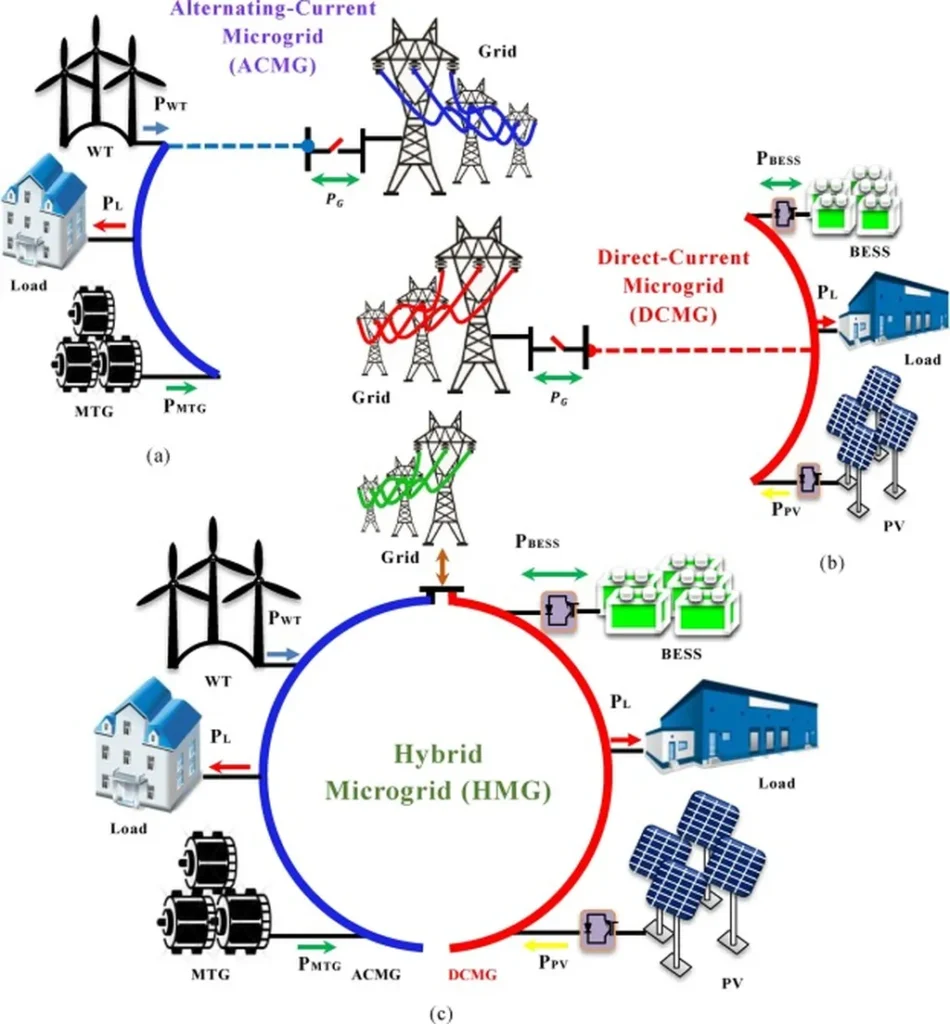In the rapidly evolving landscape of renewable energy, microgrids are emerging as a critical component in the transition towards sustainable power systems. A recent study published in the journal *China Electric Power* (translated from *Zhongguo dianli*) sheds light on how grid-forming energy storage devices can significantly enhance the stability and performance of these microgrids. The research, led by Chenyu Zhang from the State Grid Jiangsu Electric Power Co., Ltd. Research Institute in Nanjing, China, offers a fresh perspective on optimizing voltage dynamic control in renewable energy microgrids.
The study addresses a crucial challenge in microgrid management: the voltage dynamic overvoltage caused by load switching and fluctuations in distributed new energy output. Traditional approaches often overlook the complex interactions between active and reactive control parameters and the impact of the microgrid’s resistance-to-inductance ratio. Zhang and his team constructed a comprehensive system voltage dynamic model that includes grid-forming energy storage, distributed new energy sources, and the microgrid network. This model allows for a more nuanced understanding of how different control parameters influence voltage dynamic control performance under varying conditions.
“Our research reveals the intricate synergy and constraint relationship between the active and reactive control parameters of grid-forming energy storage under different resistance-inductance ratios,” Zhang explained. This insight is pivotal for energy sector professionals, as it provides a roadmap for optimizing the configuration of energy storage devices to enhance microgrid stability.
The study’s findings are not just academic; they have significant commercial implications. By improving the dynamic control performance of microgrids, energy providers can reduce the risk of voltage fluctuations, which can lead to equipment damage and service interruptions. This, in turn, can enhance the reliability and efficiency of renewable energy integration, making microgrids a more attractive option for both utilities and consumers.
Zhang’s research also introduces a parameter design method aimed at boosting voltage dynamic control performance. This method was verified through a simulation system, demonstrating its practical applicability. The study’s innovative approach could shape future developments in the field, encouraging further research and development in dynamic modeling and control technology for renewable energy microgrids.
As the energy sector continues to evolve, the insights from Zhang’s research will be invaluable for professionals seeking to optimize the performance of renewable energy microgrids. By addressing the complexities of voltage dynamic control, this study paves the way for more stable, efficient, and reliable energy systems, ultimately contributing to a more sustainable future.

